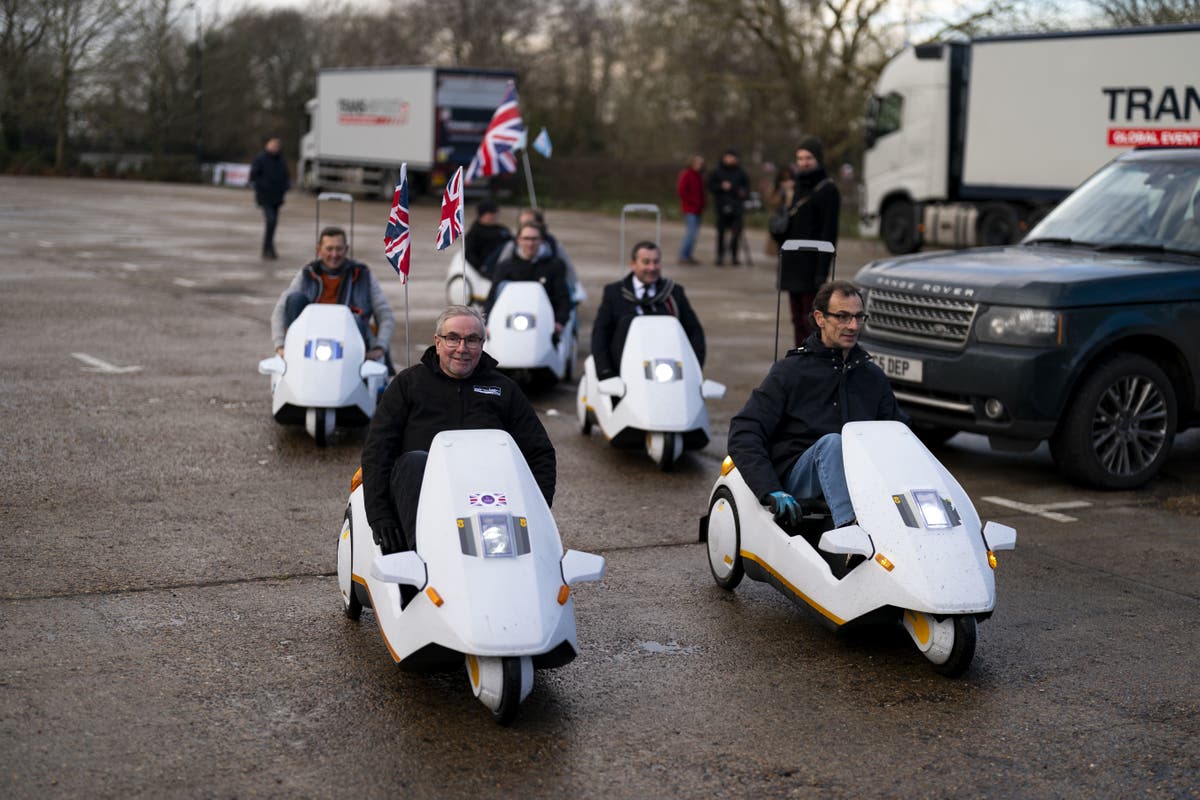The vehicle was hailed as “ahead of its time” by Sinclair C5 enthusiasts who gathered to mark its 40th anniversary.
Fifteen of the cars were driven at Friday’s event at Alexandra Palace, north London, the site of the original unveiling on January 10, 1985.
The C5 was the brainchild of multi-millionaire British inventor Sir Clive Sinclair, who made his name by creating the world’s first pocket calculator and a pioneer in the affordable home computer market.
This three-wheeler is a low-slung, single-person, battery-powered vehicle.
It was hailed by some as the future of eco-friendly transportation, and despite being a commercial failure, it gained cult status among collectors.
“It was a real innovation for its time,” Brian Griffin, who organized the rally, told the PA news agency.
“He was ahead of his time. Society is now ready for sustainable personal electric vehicles.
There is warmth and nostalgia for Sir Clive and his innovations.”
Mr Griffin described the C5 as “an iconic vehicle of the ’80s” and said it was “really fun to drive”.
“They’re really quite soft,” he continued.
Many of us use them for practical trips. If I want to buy some shopping, or get a prescription, I get mine.
We use them for pubs in the summer. We use them as much as we can.”
Another attendee, Gus Desbarats, who redesigned the C5 body for Sir Clive, said: “It has endured.
This design still looks futuristic and right after 40 years. I am very proud of this.”
Mr Desbarats admitted the “configuration is wrong”, as the rider’s position is “low and exposed”.
He added: “If Clive was building a motorcycle, I think he’d probably get his numbers.”
One news report at the time of the C5’s launch compared it to an “aerodynamic bath” and a “big electric skateboard”.
Initially the influx meant the Hoover factory in Merthyr Tydfil, South Wales, where the tricycles were assembled, struggled to keep up.
With a top speed of 15 mph, the vehicle cost £399, a fraction of the cost of a regular car.
But it soon turned into a commercial disaster, costing Sir Clive £7 million.
Demand waned and by September 1985 they were selling for £139.
In the end, about 12,000 were sold – far less than the 100,000 projected in the first year.
The car’s body is made of a lightweight polypropylene shell on a chassis designed by sports car manufacturer Lotus.
Power comes from a battery that provides a range of 10 to 12 miles before needing a charge.
The C5 took advantage of legislation introduced in 1983 which meant it could be driven by people aged 14 and over without insurance, road tax or helmets – even if they were disqualified from driving.
In an interview to mark the 20th anniversary of the launch in 2005, Sir Clive insisted he had no regrets about the C5, stating that “we sold a lot of them and they weren’t hated by customers”.
He also predicted that electric cars will take over as fossil fuels become less available.
Sir Clive died in September 2021 aged 81.








